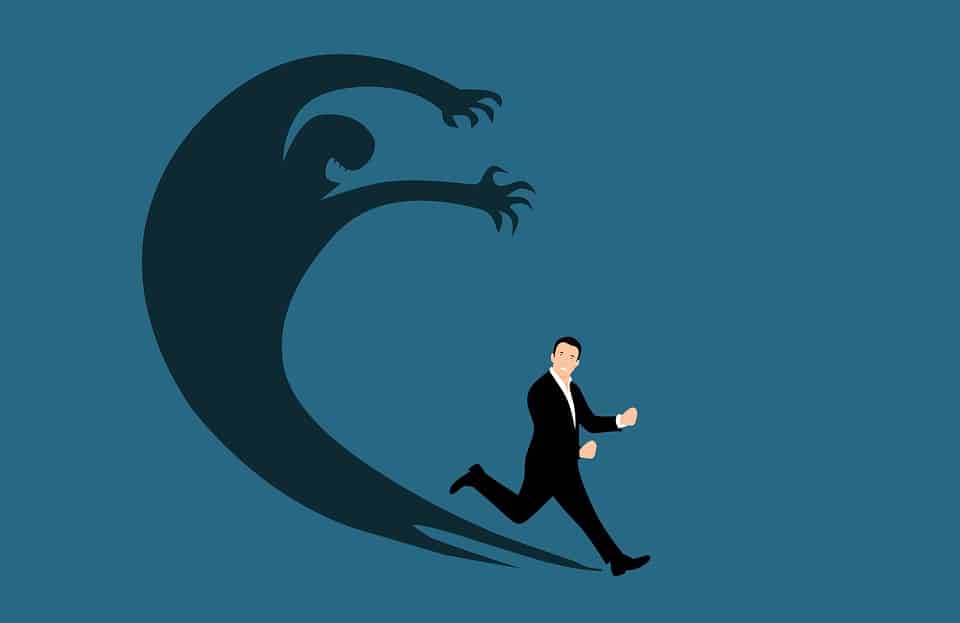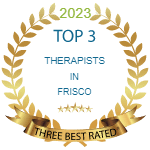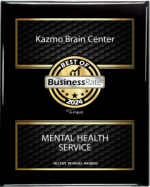One day, John was driving home from work and was caught in traffic. He suddenly noticed that his heart was beginning to race. He then felt short of breath and tightness in his chest. When he began to sweat, he became concerned and drove to the nearest emergency room where they could find nothing physically wrong with him. John had just experienced his first panic attack. Over the next few weeks, the attacks became worse and he started to avoid driving altogether.
Have you had a panic attack like John? Have you wondered about the meaning of panic attacks and their symptoms? Have you asked yourself about treatment? In this article, let’s look at panic disorder and its symptoms.
What is Panic Disorder?
Panic disorder happens when you experience repeating unforeseen fits of anxiety. The DSM-5 defines panic attacks as abrupt surges of intense fear or discomfort that peak within minutes. People with the disorder live in permanent fear of having another panic attack.
You may be having a panic attack when you feel the sudden, overwhelming terror that has no obvious cause. You may experience physical symptoms such as a racing heart, a hustling heart and sweating.
Numbers About Panic Disorder In US
10 % of adults in the U.S. have a panic attack each year. About 35% of people have one panic attack in their lifetime. But most of them don’t have panic disorder. Only about 3% of adults have it, and it’s more common in women than in men.
What are the Symptoms of Panic Disorder?
Symptoms of panic disorder frequently start to show up in adolescents and youthful grown-ups younger than 25. In the event that you have had at least four fits of anxiety, or you live in dread of having another panic attack after experiencing one, you may have a panic disorder.
Common symptoms associated with a panic attack include:
- Racing heartbeat or palpitations
- Shortness of breath
- Feeling like you are choking
- Dizziness (vertigo)
- Lightheadedness
- Nausea
- Sweating or chills
- Shaking or trembling
- Changes in mental state, including a feeling of derealization (feeling of unreality) or depersonalization (being detached from oneself).
- Numbness or tingling in your hands or feet
- Chest pain or tightness
- Fear that you might die
- Fear of losing control or going crazy
- A fear of dying
- A churning stomach
- A tingling in your fingers
- A need to go to the toilet
- Ringing in your ears
Panic attacks produce intense fear that begins suddenly, often with no warning. An attack typically lasts for 10 to 20 minutes, but in extreme cases, symptoms may last for more than an hour.
The number of attacks you have will depend on how severe your condition is. Some people have attacks once or twice a month, while others have them several times a week.
What a Panic Attack Feels Like?
Hear from real people who have experienced a panic attack and described what happened:
“It feels like my body is going at the speed of light”
“You’re frozen. You can’t move. You think the end is coming.”
“I thought I was having a heart attack, life-threatening allergic reaction, or imminent death.”
“You feel like you’re dying and going crazy at the same time.”
“I couldn’t breathe, I couldn’t move, I couldn’t do anything, just I started crying.”
“I feel like I’m jumping out of my own skin.”
“It literally feels like my world is falling apart”
A State of Panic Disorder
Gain a better understanding of panic disorder by sharing in Dylan’s story in the video below:
Causes of Panic Disorder
The reasons for panic disorder are not clearly understood. Research has shown that panic disorder may be genetically linked. Panic disorder is also associated with significant transitions that occur in life. Failure at university, marriage or divorce, getting first kid or traveling, are all major life transitions that may create stress and lead to the development of panic disorder.
Also, one possibility is that the brains of people who have it may be especially sensitive in responding to fear.
Risk Factors
A few things can make you more likely to have the panic disorder,
- Someone in your family has it (though it’s not clear how much of that is because of your genes or the environment you grew up in).
- High levels of stress
- Incessant negative sentiments or inconvenience managing negative feelings.
- Utilizing medications or drugs to attempt to manage panic disorder can make the symptoms worse.
- Trauma: Experiencing a traumatic event, such as being the victim of physical or sexual abuse, can increase the risk of panic disorder as well.
Individuals with this issue regularly additionally have depression. Yet, there is no proof that one condition causes the other.
Panic Disorder Diagnosis
There isn’t a lab test explicitly for panic disorder. Because the symptoms can feel a lot like those of a heart attack, your doctor probably will start by examining you and ruling out other health issues. If no other condition is causing your symptoms and you’ve had two or more random panic attacks and live in fear of a repeat episode, you probably have panic disorder.
Types of Panic Attacks
There are two main types of panic attacks: unexpected and expected. People with panic disorder most commonly experience unexpected panic attacks, but some do experience both types.
- Unexpected panic attacks occur suddenly without any external or internal cues. In other words, they seem to happen “out of the blue” it happens when you least expect it.
- Expected panic attacks occur when someone is exposed to a situation for which they carry fear. For example, having a panic attack when the lift suddenly broke down.
Treatments for Panic Disorder
Treatment aims to reduce the number of panic attacks you have and ease your symptoms.
Panic disorder, like other anxiety disorders, is often treated with psychotherapy, medication (antidepressants or anti-anxiety drugs), or a combination of both.
Psychotherapy
Psychotherapy for panic disorder can include several different approaches, including:
- Cognitive behavioral therapy (CBT) can help people with panic disorder learn new ways of thinking and reacting to anxiety-provoking situations. As part of the CBT process, therapists help clients identify and challenge negative or unhelpful patterns of thinking and replace these thoughts with more realistic and helpful ways of thinking.
- Exposure therapy involves progressively exposing people with panic disorder to the object and situations that trigger a fear response while teaching and practicing new relaxation strategies.
- Panic-focused psychodynamic psychotherapy (PFPP) aims to uncover underlying conflicts and experiences that may have influenced the person’s development of panic and anxiety.
Medicine
Antidepressants can take 2 to 4 weeks before they start to work and up to 8 weeks to work fully.
Keep taking your medicines, even if you feel they’re not working and only stop taking them if your Psychiatrist advises you to do so.
What to do during a Panic Attack?
The next time you feel a panic attack coming on:
- Do not fight it.
- Stay where you are, if possible
- Breathe slowly and deeply
- Remind yourself that the attack will pass
- Focus on positive, peaceful and relaxing images
- Remember it’s not life threatening
- Preventing a further attack
Prevention of Panic Disorder
In addition to medication and psychotherapy, some lifestyle habits have been found to help people better cope with the symptoms of panic disorder:
Prioritize Sleep
People with panic disorder often have trouble sleeping and the resulting sleep deprivation can result in greater panic disorder symptoms.
Watch Your Diet
While there’s no magic diet to cure your panic disorder, there are certain foods and substances that might increase your anxiety or, trigger a panic attack, including alcohol, caffeine, refined sugar and stop smoking.
Practice Relaxation
Relaxation techniques can help you slow down your thoughts, ease stress and anxiety and counteract many of the cognitive and physical symptoms of panic disorder. Here are a few relaxation techniques you can try on your own or with the help of a mental health professional
Deep breathing
- Mindfulness meditation
- Progressive muscle relaxation
- Visualization
- Yoga
Read
Read a self-help book for anxiety based on the principles of cognitive behavioral therapy (CBT) – ask your therapist to recommend one.
Get Moving
Not only can regular exercise help reduce stress, anxiety and tightness throughout the body, but also it’s been found to lessen the frequency of panic attacks as well.
To recover from Panic Disorder, you must believe that you deserve a happy normal life and you must not be shy about seeking mental help from a mental health therapist at Kazmo Brain Center.
Kazmo Brain Center is a counseling center in Frisco, Texas specializing in mental health and will work with you toward a happier and more satisfying life. If you or your loved ones are facing Panic Disorder and you think that you need help, Request an appointment at the Kazmo Brain Center and we are here to help.
Resource:
teenmentalhealth.org
www.webmd.com







